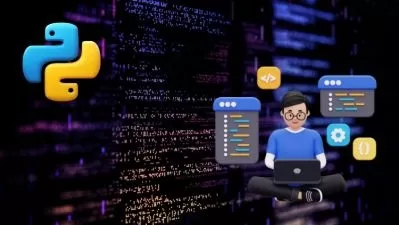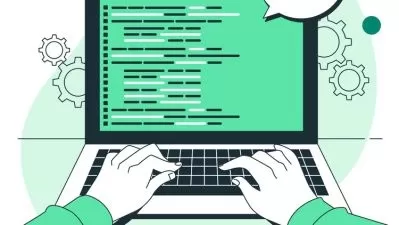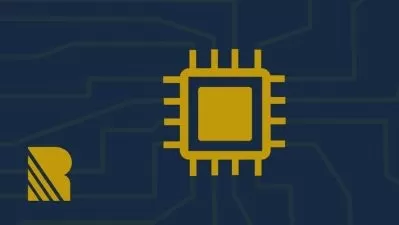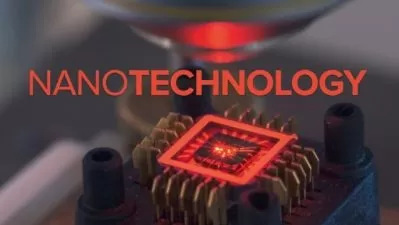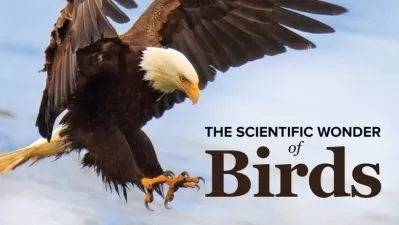Python Programming for Biological Problems
Jones Granatyr,IA Expert Academy,Guilherme Matos Passarini, phD
6:57:47
Description
Solve more than 30 exercises and 4 Biology projects using Python programming language! Step by step implementations!
What You'll Learn?
- Learn the basic syntax of Python language quickly and easily
- Implement the main Python language operators: mathematical, logical, relational and conditional
- Create loop structures using for and while commands
- Implement functions for modularization of programs
- Implement the main Python language collections: tuples, lists, dictionaries, sets and arrays
- Manipulate text files
- Perform error and exception handling
- Learn the basic intuition and practice about regular expressions
- Learn the basic intuition and practice of Object Orientation
- Estimate the rate of recombination between genes
- Analyze genetic sequences
- Model bacterial growth
- Write a code that simulates a biology test, where at the end the grade is calculated
- Analyze gene sequence files directly from databases in .fasta format
- Analyze protein structure files in .pdb format
- Build a basic identification key for plant species
Who is this for?
What You Need to Know?
More details
DescriptionBiologists, biology students, and professionals in related fields generally have little or no contact with computer programming. However, the growing of data in genomic, protein and organism databases can be used to model the solution for some problems, such as the discovery of medicines and insecticides. It leads biologists to benefit from computer programming knowledge, so that they can develop useful applications in molecular biology, ecology, research on diseases, among others.
This course was developed with the purpose of introducing biologists, students of biology, biomedicine, ecology, pharmacy and professionals in related areas to programming using Python, which is nowadays one of the most used programming languages. It has a clear syntax and is easy to learn especially if you are a professional who are not familiar with technology. Many tools used in the field of biology were written in Python, which makes it a great option for establishing your first contact with computer programming. You will learn the following topics:
Python installation and main tools (IDEs)
Variables, constants and strings
Math operations
Logical, relational and conditional operators
Loops (for and while)
Functions
Lists, dictionaries, tuples, sets and arrays
Manipulation of text files
Error and exception handling
Regular expressions
Object oriented
After learning the basic concepts of Python, you will be able to apply the concepts in exercises, challenges and practical projects related to ​​Biology. Below are some of the case studies that we will implement step by step:
Prediction of the mass of a peptide sequence according to its amino acid composition
Schedule a biology test that calculates the grade and whether the user got each question right or wrong
Creating classes related to objects in the biological world
.fasta gene sequence analysis
Analysis of gene frequencies according to the Hardy-Weinberg Theorem
Creating functions for population ecology calculations
Discover patterns in RNA sequences
Estimation of gene distances
Basic species identification
Troubleshooting gene frequencies
Creating scripts for parsing .pdb-type protein sequence files
Transcription of DNA sequences into RNA
There are more than 80 classes, concepts, code demonstration, and exercises with solutions! More than 30 proposed challenges and 4 small projects applying the concepts learned in each section in a biological context, with step-by-step resolution.
Who this course is for:
- Biology students or similar areas, such as biomedicine, pharmacy, forestry engineering, etc.
- Biology or related professionals who wish to learn a programming language
- Developers or IT professionals who are interested in applying programming knowledge in the field of biology
- Undergraduate students taking programming courses
- People interested in programming languages
Biologists, biology students, and professionals in related fields generally have little or no contact with computer programming. However, the growing of data in genomic, protein and organism databases can be used to model the solution for some problems, such as the discovery of medicines and insecticides. It leads biologists to benefit from computer programming knowledge, so that they can develop useful applications in molecular biology, ecology, research on diseases, among others.
This course was developed with the purpose of introducing biologists, students of biology, biomedicine, ecology, pharmacy and professionals in related areas to programming using Python, which is nowadays one of the most used programming languages. It has a clear syntax and is easy to learn especially if you are a professional who are not familiar with technology. Many tools used in the field of biology were written in Python, which makes it a great option for establishing your first contact with computer programming. You will learn the following topics:
Python installation and main tools (IDEs)
Variables, constants and strings
Math operations
Logical, relational and conditional operators
Loops (for and while)
Functions
Lists, dictionaries, tuples, sets and arrays
Manipulation of text files
Error and exception handling
Regular expressions
Object oriented
After learning the basic concepts of Python, you will be able to apply the concepts in exercises, challenges and practical projects related to ​​Biology. Below are some of the case studies that we will implement step by step:
Prediction of the mass of a peptide sequence according to its amino acid composition
Schedule a biology test that calculates the grade and whether the user got each question right or wrong
Creating classes related to objects in the biological world
.fasta gene sequence analysis
Analysis of gene frequencies according to the Hardy-Weinberg Theorem
Creating functions for population ecology calculations
Discover patterns in RNA sequences
Estimation of gene distances
Basic species identification
Troubleshooting gene frequencies
Creating scripts for parsing .pdb-type protein sequence files
Transcription of DNA sequences into RNA
There are more than 80 classes, concepts, code demonstration, and exercises with solutions! More than 30 proposed challenges and 4 small projects applying the concepts learned in each section in a biological context, with step-by-step resolution.
Who this course is for:
- Biology students or similar areas, such as biomedicine, pharmacy, forestry engineering, etc.
- Biology or related professionals who wish to learn a programming language
- Developers or IT professionals who are interested in applying programming knowledge in the field of biology
- Undergraduate students taking programming courses
- People interested in programming languages
User Reviews
Rating
Jones Granatyr
Instructor's CoursesIA Expert Academy
Instructor's CoursesGuilherme Matos Passarini, phD
Instructor's Courses
Udemy
View courses Udemy- language english
- Training sessions 80
- duration 6:57:47
- Release Date 2022/12/03










